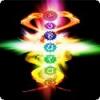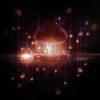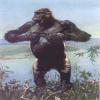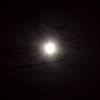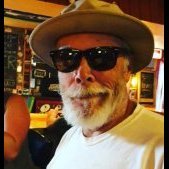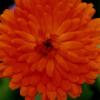Search the Community
Showing results for 'Dream'.
Found 7,590 results
-
Kind of agree that if it's already happening then just work with it, otherwise what's the point in seeking it? You're just creating more layers to detangle for yourself. It's like people who seek psychic powers -- why do that? One of the best things I learned from Tantric Buddhism is that if these things appear on the path to realization then just practice non-attachment, as they are often roadsigns of your own advancement. But to seek them for their own sake is desirous and problematic. My lessons in the astral mostly just taught me about the different spiritual forces that are out there, the capabilities of consciousness, and gave some kind of proof positive experience that the consciousness is not the body. It's not really a state of consciousness I long to be in. IMO the most useful part of the dream time is it deconstruct and integrate your own subconscious. Dream work is awesome for that.
-
You bring up an interesting point. Essentiallly you point out two important observations. 1. The breathing practice of tummo and Kundalini are virtually the same. Additionally both practices involve taking the energy in the lower central channel and directing them upwards. Both exercises produce psychic/spiritual experiences. 2. The psychic visualizations and experiences vary somewhat in their description. So lets suppose we took two people practicing two different types of breathing that looked essentially the same. These two people sitting side by side would look as if they were practicing basically the same thing. The difference would be in their minds. One would be visualizing tibetan buddhist symbols, while one would be visualizing hindu symbols. The nature of the kundalini experience is a spiritual/ psychic experience. I once knew a girl who was laying in a tent with someone who was expeirencing a full blown Kundalini Awakening. While the person experiencing Kundalini, reported full bodied orgasmic ecstacy, a rainbow colored light snake, projecting into a higher realm, and visions of Kali, the girl laying a few feet away experienced nothing of the sort. This indicates that the Kundalini awakens in an individuals mind and consciousness. This is an important observation, because it suggests that all reports of the Kundalini that we possess must be subjective, because they must have all occured to individual subjects. I recognize that the effects of these experiences can be viewed by others, such as Kundalini active individuals glowing, becoming more open and loving, experiencing physiological changes, ect, but the physiological changes result from experiences that take place in individual minds. The nature of Kundalini to act in the higher centers, as well as the visionary nature of the experiences themselves suggest that DMT from the pineal gland is largely involved in the process of Kundalini Awakening. If DMT is involved then it will lend not only the rich mental visuals of the dream state, but also other properties of the dream state as well. The most relevant property of dreams to consider in this context is the tendency for dreams to conform to the dreamers expectations. This property is commonly observed by lucid dreamers and is discussed by Stephen Laberge PHD in his book Exploring the World of Lucid Dreaming. In his book he notes that if he expects that one of his lucid dreaming techniques will work in a certain way, then it does for him. This same technique will not necessarily work in the same way for others whose expectations are different. This is a critically important observation if we belive that DMT (Dreame Hormone) is in any way involved in the Kundalini Experience. If this is true than what individuals experience in Kundalini is based on their own expectations. This conforms to my experience with Kundlaini. 1. A person who practices Shiavism, is initiated into Shiavism, and belives in Shiavism, will likely experience a serpent, Kali, and the Chakras. 2. A person whi practices tibetan buddhism, is initiated into tibetan buddhism, and believes in tibetan buddhism, will likely experience different colored drops in the body, and maybe some buddhas, tantric deites and bodhisattvas. 3. A person who practices Qigong, is initiated into qigong, and believes in qigong, may just experience energy, with some Tao centric imagery, like a yin body projecting out of the physical body 4. Dante Aligheri who practiced Chriastianity, was initiated into Christianity, and Belived in Christianity, experienced the inferno, the purgatorio, and the paradisio, along with beatrice (a woman he was in love with) Virgil (a poet he admired), and a rosy cross. Haiving this occur in the participants mind in concordance with the participants expectations can all be attributed to DMT. This mechanism sheds light on some commopn guidelines in energetic systems. 1. Initiation into the system is recommeded so that the symbols are given proper importance in the persons mind. 2. Bhakti is important so that the participant will expect to experience the process as a predictable and loving experience. 3. Mixing systems is frowned upon because the symbols might be experienced simultaneously, and may limit the teachers abiltiy to help. The teacher who has practiced qigong for 75 years may have no experience with Tibetan Buddhism. I once guided a Woman throguh a Kundalini Awakening. She had no particular devotion to the symbols of Shiavism (Chakras, Kali, Shiva, Kundalini Serpent) which I used primarily. She had initiated the process as she gradually let go of her childhood faith is Southern Baptist Christianity. The process went very smoothly for her until she insisted on telling her mom about her experiences. What occured then was a terrible case of symbolic cross contamination. Her mom and a Christian friend convinced the lady that she was participating in Devil worship, the Serpent had marked er as its own, demons were communicating to her through me thier messenger, and she was surely going to hell unless she repented and accepted the Lord Jesus Christ as her savior. This process changed her expectations and the previously blissful Kundalini experience became nightmarish for her. She considered suicide multiple times, and was afraid of her own mind for over a year. She did even out eventually, and began to love the Kundalini again. She raises it like its candy these days. The experience of the Kundalini tends to overload the ego and produce individuals who believe that they are enlightened. This is soemthimes called "Wild Fox Enlightenment" or "Stinking With Enlightenment." The ego is dazed during the initial shock of the experience, and gradually reasserts itself. Egos in this stage like to sit around and think up funny names for themselves, such as enlightened being, Lama, Rinpoche, Sorcerer, Master, Grandmaster, Guru, Bodhisattva or Swami. Beings at this stage do not possess perfect psychic clarity, as they may commonly claim. They have simply discovered the nondual nature of thier self, and have become disoriented by the occurance. This is why there is such a great degree of vairation in the reported experiences of Kundalini, even within the same system. The nondual nature of the experience allows peoples minds to interpret the experience however they want, with whatever symbols they like. The true masters regognize this and do not dwell on the symbols so much. They do not say "Im enlightened and your not, so you need to meditate for 20 years to be like me." They say "Were all gods Children." These beings who experience the initial awakening of the Kundalini may eventually lay the ego to rest. At this point the being may become a clear channel for divine energy, such as Krishna or Yeshua. At this point the person will begine to naturally speak from a nondual perspective, and confuse people, who interpret thier words dualistically, for thousands of years. "I am the way, the truth, and the Light, and nobody comes to the father but by me." Other beings may recognize the confusing potential of nonduality, and refuse to address it directly. This is the foundation of Tao and Zen. "The Tao that Can Be spoken Is not the eternal Tao" -Lao Tzu In my opinion this is why descriptions of the experience vary greatly. The expreience is a subjective one, so its only natural. I belive expectations are why people experience many of the problems with Kundalini awakening as well. For example, take the belief of the existence of a second nerve in the spine that the Kundalini may rise up that will drive the practicioner insane and eventually kill him. I believe that this came into the popular consciousness with the publcation of Gopi Krishnas book Kundalini the Evolutionary Energy in Man. In Glenn Morris's Kundalini Awakening Process this possiblity is never mentioned. Practicioners of Morris's system regularly raise the Kundalini and this issue never comes up. In Gopi Krishnas book Gopi searches all over for a Kundalini awakened individual to help him. He only finds a yoga teacher who has heard of the Kundalini but never raised it himself. The teacher passes on the myth of this second nerve. Gopi immediately beleves that this is what has happened to him and continues to suffer for years. For KAP students, who dont believe in this possiblity, it doesn't happen. This is another example of how expectations shape the experience of Kundalini, Love and Light Tony
-
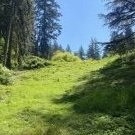
Do Taoist Yoga Nidra/Dream Yoga Practices Exist?
forestofclarity replied to Oneironaut's topic in Daoist Discussion
Oneironaut, I recently picked up this course at my local used book shop: Dream Yoga by Andrew Holecek It's pretty good so far, but I've only made it through Disk 2. He combined dream yoga with modern techniques, and he's been trained in both. He says in some ways, the Western techniques he learned are better than the Eastern ones. However, most Western lucid dreaming techniques are very similar. I have not seen much difference over the years. I have found them to be effective. A lot of Tibetan and Indian yoga based teachings are very cultural. In other words, they use symbols and images that are very charged in the culture of their origin, but may not have the same impact on people from other cultures, unless one has internalized the culture on an unconscious level. I would imagine that the same would go for Taoist techniques. So finding a Taoist technique may not help you unless you are already deeply steeped in Taoist teaching/practice. -
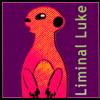
Do Taoist Yoga Nidra/Dream Yoga Practices Exist?
liminal_luke replied to Oneironaut's topic in Daoist Discussion
For what it´s worth, Juan Li, a senior healing tao instructor, used to teach a weekend workshop in Dream Yoga. Not sure if he still does. Not that that proves it´s a traditional practice or anything. Taoist practice is vast, and it´s hard for me to imagine sleep and dream practices aren´t a part of it somewhere. Afterall, sleeping and dreaming are part of the human experience. I´d think that at a certain point, regardless of the spiritual path followed, consciousness illuminates that part of our lives. Not because someones allegiance is to Taoism, Buddhism, Yoga or what have you, but because that´s the natural trajectory of spiritual development. Liminal -
My favorite definitions of Shikantaza: One way to categorize the meditation practice of shikantaza, or “just sitting,” is as an objectless meditation. This is a definition in terms of what it is not. One just sits, not concentrating on any particular object of awareness, unlike most traditional meditation practices, Buddhist and non-Buddhist, that involve intent focus on a particular object. Such objects traditionally have included colored disks, candle flames, various aspects of breath, incantations, ambient sound, physical sensations or postures, spiritual figures, mandalas, teaching stories, or key phrases from such stories. Some of these concentration practices are in the background of the shikantaza practice tradition, or have been included with shikantaza in its actual lived experience by practitioners. But objectless meditation focuses on clear, nonjudgmental, panoramic attention to all of the myriad arising phenomena in the present experience. Such objectless meditation is a potential universally available to conscious beings, and has been expressed at various times in history. This just sitting is not a meditation technique or practice, or any thing at all. “Just sitting” is a verb rather than a noun, the dynamic activity of being fully present. … it is objectless not only in terms of letting go of concentration objects, but also in the sense of avoiding any specific, limited goals or objectives… just sitting is not a technique or a means to some resulting higher state of consciousness, or any particular state of being… … [for Dogen] simply just sitting is expressed as concentration on the self in its most delightful wholeness, in total inclusive interconnection with all of phenomena… Taigen Dan Leighton The prototype for the unity of practice and enlightenment, as all Dogen students know, is “zazen- only” (shikan taza). In a nutshell, it consists of four aspects: (1) It is that seated meditation which is objectless, imageless, themeless, with no internal or external devices or supports, and is nonconcentrative, decentered, and open-ended. Yet it is a heightened, sustained, and total awareness of the self and the world. (2) It seeks no attainment whatsoever, be it enlightenment, an extraordinary religious experience, supernormal powers, or buddhahood, and accordingly, is non-teleological [lacks “purposeful development towards a final end”] and simply ordinary. (3) It is “the body and mind cast off” (shinjin datsuraku) as the state of ultimate freedom, also called “the samadhi of self-fulfilling activity” (jijuyu zammai). And (4) it requires single-minded earnestness, resolve, and urgency on the part of the meditator. Hee-Jin Kim For Dogen, seated meditation, or zazen, was the very essence of the Buddhist religion… the practice of this zazen was not simply an important aid to, nor even a necessary condition for, enlightenment and liberation; it was in itself sufficient: it was enough, he said, “just to sit” (shikan taza), without resort to the myriad subsidiary exercises of Buddhist spiritual life. Indeed (at least when rightly practiced) zazen was itself enlightenment and liberation: it was the ultimate cognition, the state he called “nonthinking” (hi shiryo) that revealed the final reality of things; it was the mystic apotheosis [exalted or glorified example], the “sloughing off of body and mind” (shinjin datsuraku), as he said, that released man into this reality. Such practice, then (at least when rightly understood) was its own end, as much the expression as it was the cause of transcendence: it was “practice based on enlightenment” (shojo no shu); it was the activity of buddhahood itself (butsugyo). As such, this was, ultimately speaking, no mere human exercise: it was participation in the primordial ascesis (gyoji, continuous practice) of being itself, that which brought forth matter and mind, heaven and earth, the sun, moon, stars, and constellations. … For Menzan [1683-1769, “the chief architect of modern Soto dogmatics”] and his church, Dogen’s zazen is like no other: it is the practice of “nonthinking,” a subtle state beyond either thinking or not thinking and distinct from traditional Buddhist psychological exercises of concentration and contemplation; it is “just sitting,” a practice in which… all striving for religious experience, all expectations of satori, is left behind. This zazen is nothing but “the mystic practice of original verification” (honsho myoshu), through which from the very start one directly experiences the ultimate nature of mind. Carl Bielefeldt Shikantaza…is the mind of somebody facing death. Let us imagine that you are engaged in a duel of swordsmanship of the kind that used to take place in ancient Japan. As you face your opponent you are unceasingly watchful, set, ready. Were you to relax your vigilance even momentarily, you would be cut down instantly. A crowd gathers to see the fight. Since you are not blind you see them from the corner of your eye, and since you are not deaf you hear them. But not for an instant is your mind captured by these impressions. When you thoroughly practice shikantaza you will sweat—even in the winter… Sit with such intensely heightened concentration, patience, and alertness that is someone were to touch you while you are sitting, there would be an electric spark! Sitting thus, you return naturally to the original Buddha, the very nature of your being. Hakuun Ryoko Yasutani The style of meditation called “silent illumination” [Ch. mozhao, Jap. mokusho; the early Caodong/Soto meditation practice that Rujing and Dogen came to call shikantaza] is one of the great practices of the Chan tradition… This practice originated in India, where it was called shamtatha- vipashyana, or serenity-insight. The aim of this practice is a mind unburdened with thoughts. This leads the mind to profound awareness about its own state… Silent illumination is a very peaceful style of meditation in which there is not one thought, yet your mind is extremely clear. I use three phases to describe this state: first, “bright and open”; second, “no scattered thoughts”; and third, “not one thought.” When the mind drops all use of words, it becomes bright and open; this is the first characteristic. Next, “no scattered thoughts” refers to single-mindedness—total concentration on the method. But when you finally forget the method itself, and no one thought remains, that is genuine serenity. Ultimately, Silent Illumination is the method of no method… Silent illumination is just dropping all thoughts and words and going directly to the state of Chan. I do not recommend this method to people too often… You can be just idling, having very subtle thought, and believe you are practicing Silent Illumination. You can be silent without illuminating anything. Sheng Yen Suzuki Roshi always talked about shikantaza as one’s day-to-day, moment-to-moment life of selflessness… Suzuki Roshi’s simple day-to-day activities—the way he would sit down and stand up, eat his dinner, walk, put on his sandals—this was his expression of shikantaza. Everyday activity with no selfishness—just doing the thing for the thing—this was his shikantaza. We usually say that shikantaza means “just sitting.” And that’s true. Just putting on your shoes, too. But this “just” has a special meaning. It means “without going any further” or “without adding anything extra.” … But the shikantaza, or the “just doing,” is the selfless activity of just doing within the dream… I think about shikantaza as a state in which our thought and our activity have no gap… Sojun Mel Weitsman Neuroscientists use these words to describe what we call shikantaza: panoramic receptive non- judgmental attention. This is different than focused attention, which includes such practices as breath meditation, where the attentional field is narrowed and "pointed" toward an object. Different parts of the brain are activated during these two types of meditation. Roshi Joan Halifax Katagiri used to say shikantaza isn't anything in particular and that also fits for the Soto school's lack of single view on the issue. Katagiri also called following the breath shikantaza but once I could follow the breath, told me to not attach to anything. At least several of his successors, though, just teach following the breath as shikantaza. Dogen's brilliant reframe on this practice and reconstruction of the tradition was based on adding “wholeheartedness” which changed silent illumination into “earnest vivid sitting” (literal trans. of shikantaza). RE: “wholeheartedness,” what I encourage is full devotion to no particular thing. That's a little different from seeing wholeheartedness as a state. For one thing, I emphasize the “whole” and “heart” parts of wholehearted – nothing left out, including the flowing emotions. Nothing left out includes samadhi states, dhyanic states, and insight/realization as well. But like a falling maple leaf, showing front, showing back. Dosho Port I would say shikantaza is natural awareness as is (so that the just sitting is indeed “just” “sitting”). Awareness is being human, so there is not a need to “stay aware” (or a particular state that we need to add). Likewise, it is not a matter of making “effort at awareness.” Elihu Genmyo Smith When we sit facing the wall, there is nothing in front of us as object. There is only the wall. We have no object in our mind because we don’t visualize anything, don’t concentrate on a mantra, and don’t pay any special attention to the breath. We just sit. Still many different kinds of thought come and go naturally. It is very clear that thoughts, emotions, and daydreams are illusions like bubbles rising in water. We let go of them. No clinging to them, chasing after them, or pushing them away. We really do nothing but sit. This is what Dogen Zenji meant when he says, “thinking of not-thinking.” We cannot say that there is no thinking. And we cannot say that we are thinking. “Thinking of not-thinking is the precise expression of the reality of mind in zazen. It is like a car engine idling. When the transmission is in neutral, even though the engine is moving, the car does not move. Even though thoughts are coming and going, we take no action based on those thoughts. Thoughts are simply idling. We don’t create karma. This is what Dogen Zenji meant in Zuimonki when he said zazen is the true form of the self and non- doing or not action… In Shobogenzo Zazenshin, Dogen Zenji said, “In order to think (shiryo) of not-thinking (fu-shiryo), we use beyond-thinking (hi-shiryo). This means that what is happening in our zazen is not a matter of thinking or not-thinking. We “do” nothing; neither “to think” nor “not to think.” We put our entire self on the ground of beyond-thinking. On that ground, sometimes many thoughts come up, sometimes, no thoughts arise… In our daily lives, we try to study from teachers and books to correct the distortions of self- centeredness. But in zazen we let go of all thoughts, even thoughts of making corrections… Our practice of just sitting is the practice of the bodhisattva vows and repentance. Buddhas and ancestors’ zazen is the vow to save all living beings… Shohaku Okumura Do not concentrate on any particular object or control your thought. When you maintain a proper posture and your breathing settles down, your mind will naturally become tranquil. When various thoughts arise in your mind, do not become caught up by them or struggle with them; neither pursue nor try to escape from them. Just leave thoughts alone, allowing them to come up and go away freely. The essential thing in doing zazen is to awaken (kakusoku) from distraction and dullness, and return to the right posture moment by moment… Dogen called his meditation practice shikantaza, which literally means “just sitting.” In shikantaza we sit without the koans used in Rinzai Zen. In our zazen, body and mind sit without any techniques—koans, mantras, visualizations, and so on. we find an upright posture, breathe through our nose quietly and deeply from our abdomen, and keep our eyes open. We let go of whatever thoughts arise within our mind. It is simply sitting upright without any expectation or gaining idea. Dogen’s essential teaching is that practice and enlightenment are one. Practice is not a method to make a deluded person into an enlightened being. Practice without self-centeredness is itself enlightenment. This kind of zazen practice teaches us to sit upright wherever we are. Sometimes our mind is calm and sometimes our mind is busy. Sometimes we feel peaceful, and sometimes we are in the midst of a storm. We neither cling to nor avoid any condition, but keep sitting in an upright posture. We try to live in this upright manner, not only in zazen but in our daily lives. When we deviate from uprightness, we are aware of it and return to it. Soto Zen Buddhism International Center (Sotoshu Shumucho) Once you realize that you are thinking when you are supposed to be doing nothing, and return to zazen, the thoughts which appeared as clearly before as if they were pictures on a TV. screen, disappear as suddenly as if you had switched off the TV. Only the wall is left in from of you. For an instant… this is it. This is zazen. Yet again thoughts arise by themselves. Again you return to zazen and they disappear. We simply repeat this; this is called kakusoku (awareness of Reality). The most important point is to repeat this kakusoku billions of times. This is how we should practice zazen. If we practice in this way we cannot help but realize that our thoughts are really nothing but secretions of the brain. Just as our salivary glands secrete saliva, or as our stomachs secrete gastric juices, so our thoughts are nothing but secretions of the brain. Uchiyama Kosho We say our practice should be without gaining ideas, without any expectations, even of enlightenment. This does not mean, however, just to sit without any purpose. This practice free from gaining ideas is based on the Prajnaparamita Sutra. However, if you are not careful, the sutra itself will give you a gaining idea. It says, “form is emptiness and emptiness is form.” But if you attach to that statement, you are liable to be involved in dualistic ideas: here is you, form, and here is emptiness, which you are trying to realize through your form. So “form is emptiness, and emptiness is form” is still dualistic. But fortunately our teaching goes on to say, “Form is form and emptiness is emptiness.” Here there is no dualism. When you find it difficult to stop your mind while you are sitting and when you are still trying to stop your mind, this is the stage of “form is emptiness and emptiness is form.” But while you are practicing in the dualistic way, more and more you will have oneness with your goal. And when your practice becomes effortless, you can stop your mind. This is the stage of “form is form and emptiness is emptiness.” To stop your mind does not mean to stop the activities of mind. It means your mind pervades your whole body. Your mind follows your breathing. With your full mind you form the mudra in your hands. With your whole mind you sit with painful legs without being disturbed by them. This is to sit without any idea of gain… Practice does not mean that whatever you do, even lying down, is zazen. When the restrictions you have do not limit you, this is what we mean by practice. When you say, “Whatever I do is Buddha nature, so it doesn’t matter what I do, and there is no need to practice zazen,” that is already dualistic understanding of our everyday life. If it really does not matter, there is no need for you even to say so. As long as you are concerned about what you do, that is dualistic. If you are not concerned about what you do, you will not say so. When you sit, you will sit. When you eat, you will eat. That is all. If you say, “It doesn’t matter,” it means that you are making some excuse to do something in your own way with your small mind. It means you are attached to some particular thing or way. That is not what we mean when we say, “Just to sit is enough,” or “Whatever you do is zazen.” Of course whatever we do is zazen, but if so, there is no need to say it. Strictly speaking, any effort we make is not good for our practice because it creates waves in our mind. It is impossible, however, to attain absolute calmness of our mind without any effort. We must make some effort, but we must forget ourselves in the effort we make. In this realm there is no subjectivity or objectivity. Our mind is just calm, without even any awareness. In this unawareness, every effort and every idea and thought will vanish. So it is necessary for us to encourage ourselves and to make an effort up to the last moment, when all effort disappears. You should keep you mind on your breathing until you are not aware of your breathing. Shunryu Suzuki … These sages universally maintain that absolute reality and the relative world are “not-two” (which is the meaning of “nondual”), much as a mirror and its reflections are not separate, or an ocean is one with its many waves. So the “other world” of Spirit and “this world” of separate phenomena are deeply and profoundly “not-two,” and this nonduality is a direct and immediate realization which occurs in certain meditative states—in other words, seen with the eye of contemplation—although it then becomes a very simple, very ordinary perception, whether you are meditating or not. Every single thing you perceive is the radiance of Spirit itself, so much so, that Spirit is not seen apart from that thing: the robin sings, and just that is it, nothing else. This becomes your constant realization, through all changes of state, very naturally, just so. And this releases you from the basic insanity of hiding from the Real. But why is it, then, that we ordinarily don’t have that perception? All the great Nondual wisdom traditions have given a fairly similar answer to that question. We don’t see that Spirit is fully and completely present right here, right now, because our awareness is clouded with some sort of avoidance. We do not want to be choicelessly aware of the present; rather, we want to run away from it, or run after it, or we want to change it, alter it, hate it, love it, loathe it, or in some way agitate to get ourselves into, or out of, it. We will do anything except come to rest in the pure Presence of the present. We will not rest with pure Presence; we want to be elsewhere, quickly. The Great Search is the game, in its endless forms… ... it becomes obvious that you are not entering this state, but rather, it is a state that, in some profound and mysterious way, has been your primordial condition from time immemorial. You have, in fact, never left this state for a second… But if that is so, then why even do spiritual practice? Isn’t that just another form of the Great Search? Yes, actually, spiritual practice is a form of the Great Search, and as such, it is destined to fail. But that is exactly the point. You and I are already convinced that there are things that we need to do in order to realize Spirit. We feel that there are places that Spirit is not (namely, in me), and we are going to correct this state of affairs. Thus, we are already committed to the Great Search, and so nondual meditation makes use of the fact and engages us in the Great Search in a particular and somewhat sneaky fashion… The essence of Dzogchen… in a nutshell: If Spirit has any meaning, it must be omnipresent, or all-pervading and all-encompassing. There can’t be a place Spirit is not, or it wouldn’t be infinite. Therefore, Spirit has to be completely present, right here, right now, in your own awareness. That is, your own present awareness, precisely as it is, without changing it or altering it in any way, is perfectly and completely permeated by Spirit. Furthermore, it is not that Spirit is present but you need to be enlightened in order to see it. It is not that you are one with Spirit but just don’t know it yet. Because that would also imply that there is some place Spirit is not. No, according to Dzogchen, you are always already one with Spirit, and that awareness is always already fully present, right now. You are looking directly at Spirit, with Spirit, in every act of awareness. There is nowhere Spirit is not. Further, if Spirit has any meaning at all, then it must be eternal, or without beginning and end. If Spirit had a beginning in time, then it would be strictly temporal, it would not be timeless and eternal. And this means, as regards your own awareness, that you cannot become enlightened. You cannot attain enlightenment. If you could attain enlightenment, then that state would have a beginning in time, and so it would not be true enlightenment. Rather, Spirit, and enlightenment, has to be something that you are fully aware of right now. Something you are already looking at right now… Meditation rearranges the puzzle; Dzogchen doesn’t touch a thing. Thus the pointing-out instructions usually begin, “Without correcting or modifying your present awareness in any way…”… Ken Wilber Please train yourself thus: In the seen, there will be just the seen. In the heard, there will be just the heard. In the sensed, there will be just the sensed. In the cognized, there will be just the cognized. When for you, in the seen there is just the seen, in the heard just the heard, in the sensed just the sensed, in the cognized just the cognized, then you will not identify with the seen, and so on. And if you do not identify with them, you will not be located in them; if you are not located in them, there will be no here, no there, or in-between. And this will be the end of suffering. … In this way he abides contemplating the body as body [feelings as feeling, mind as mind, mind- objects as mind-objects] internally, or he abides contemplating the body as body externally, or he abides contemplating the body as a body both internally and externally. Or else he abides contemplating in the body its arising factors, or he abides contemplating in the body its vanishing factors, or he abides contemplating in the body both its arising and vanishing factors. Or else mindfulness that “there is body” is simply established in him to the extent necessary for bare knowledge and mindfulness…. Shakyamuni Buddha
-

Do Taoist Yoga Nidra/Dream Yoga Practices Exist?
Oneironaut replied to Oneironaut's topic in Daoist Discussion
Thank you guys so much for your responses. I've done some Google searches and it seems like the Taoist versions of these practices do exist but are mostly obscure. Lucid dreaming, yoga nidra and Tibetan dream yoga on the other hand are more easily accessible for some reason and I would be more than happy to indulge myself in the latter two. I'm just a little bit weary of mixing different systems togethor. I've watched an interview with Michael Winn and he seems to suggest that the Taoist versions of the practices are much more effortless and extremely effective. I've found some information on Shui Gong but I do not know on how to further pursue the practice. I'm also interested in it as it suggests learning telepathy (something else I'm interested in) can be learned. Does anyone have any more information on this and how I can pursue learning the skill of taoist dream yoga and yoga nidra from teachers who are legit and qualified? -
Someone has to be really desperate in order to attack. So if you give them even a little bit of love. They will then exist forever in a rapturous extacy of blissful full body orgasms after another. And then they just go to sleep. Or faint and dream forever of paradise. Or well... You turn their life upside down. Inside out. x)
-

Do Taoist Yoga Nidra/Dream Yoga Practices Exist?
voidisyinyang replied to Oneironaut's topic in Daoist Discussion
Oh yeah I've also found that taking spirulina gives me much more vivid dreams. So spirulina is very dense in cholorophyll and magnesium, the green in chlorophyll, is a photoreceptor which means it converts photons (shen spirit light) into electrons (qi energy). So in TCM then the blood is considered very close to qi energy creation and chlorophyll is actually eating red blood cells - only the magnesium is just changed with iron internally - otherwise chlorophyll has the same exact structure as red blood. So by eating spirulina you actually clean the blood and create more qi energy that way. But anyway it makes the dreams have more vivid colors. So strong pigments in the food also increase the dream colors. For example Milarepa when he wasn't in samadhi would eat stinging nettles as his main food source - so much that his skin turned green. Strong pigment foods will do that - like carrots (orange skin) or garlic (sulfur yellow). So the pigments on the skin then again act as photoreceptors to change spirit light energy to qi energy internally. So for example Krishna has blue skin and I think this maybe because serotonin is increased by blue light - science uses blue lights to naturally increase serotonin in people. Or conversely blue lights from computers keep people awake since the artificially induced serotonin prevents the natural serotonin from turning into melatonin. So you then can download a program to change the color of your computer screen at night - to stop the blue light - so that the artificial light doesn't mess up your melatonin levels which in turn would mess up your dreaming. The program is called flux or f.lux. Anyway so when I was in the Andes and I was in love with a female there and we were platonic so the sublimation of my energy made my heart very hot - but then I went into the amazing vision state with the life passing before me as a review that was not chronological but revealed all the subconscious psychological meanings of events linked years apart - resolving deep inner conflicts - all unfolding in a visionary dream state that I couldn't stop - in the middle of the night - so dreaming while awake. Then I realized later in my research that high elevation naturally increases your melatonin levels to a very high level - so maybe this is why meditation in the mountains is considered so great to do. -
To answer your questions, this will stop your worries. 1. All teenagers have acne, so don't worry about it. Eventually it will go away. Your friend told you a fallacy which is not true. 2. Wet dream is completely normal for a teenager. It is because you are in the development stage to be an adult. Another words, you are in a very Yang state, you have lots of energy. When your Yang state has reached to the ultimate it will try to go to a Yin state. E.g., your wet dream releasing the sperms is one good example. Then, your body will manufacture sperms again in the next three days and bring you back to the Yang state again. By the law of Nature, the Yang-Yin cycle repeats itself. 3. Wet dream is normal for the same reason in 2. It is very natural because it went on its own without any intent on your part.
-
Is there a difference between thought, intention and observation and awareness in meditation?
Jonesboy replied to AugustGreig's topic in Daoist Discussion
What I am trying to point out in your example is notice that the mind is noticing the thoughts. That the mind is now distracted with hearing the thoughts. We all notice when meditating that we are focusing let's say on the breath and the next thing we know we are aware that we are lost in some day dream or lost in some thoughts right? Once we go deeper in silence we are able to observe lets say our thoughts or even your example you notice there is some activity in the mind. Yet, there is still this mind that is drawn to the activity of whatever is arising in the mind. It pays attention to that activity, the mind is drawn to it. What is drawn to that activity that is arising? When we start meditation it is easy to notice that it is hard to keep the mind focused on the breath for instance. We are on focusing on the breath, get lost in thoughts, notice it and return back to the breath. The same thing is happening when one is in silence but the mind is being drawn to some activity that is arising. Just like with breath meditation you have no control of the mind focusing on that activity. It is a deeper thought that you are getting lost in. You may be at a level of silence but the mind then takes over to notice the activity that is arising in the silence. The next step is to get to the stage where whatever arises within the silence, it arises without you having any focus of it. It arises and passes through without the mind going there is a thought, there is a sound, there is a vision or some activity. You are pure awareness without attaching to whatever arises in the mind. -
I have no problem with beating a dead horse. Redundancy is an excellent teacher. It's even use in brain-washing. The reason I speak of reducing is that I believe it is impossible for 99.9% of the people on the planet to actually eliminate their wants and desires. It's not the way the human mind works. Sure, wants and desires are not real things - they are mental concepts. But recall that I have already admitted that dreams are real for the person having the dream. Likewise, wants and desires are real for the person who has them. And there will always be a mountain until we climb over it or walk around it. The boulder will always be in the path until someone moves it. (That's a different story.)
-
You are describing the Advaidic view. In the views of KS, the apparent is also real. Both transcendent and immanent are true simultaneously at any point of time. Countless jivas, expansion, all of it are real just like Shiva. Not dream like appearances, which Abhinavagupta rejects as vivarta vada.
-
I wished to share my own answers to this, please forgive me if I mention what others have before or mention an alternative view to what others have mentioned. I only wish to share and learn. Is there any deities or a Deity in the Taoist way of life and ritual? I dislike the reality that I must address terms before I can share my opinions. The very term deity is complex. However my answer is that if deity exists, then the answer is yes, and if deity exists then the answer is no. I do not claim to know that deity exists, but I believe deity does and thus for me Tao is not only of God, but God is of Tao. However I can neither affirm nor deny that deities exist, I know that I do not know. 2) Can enlightenment be achieved through a Taoist type practice? The answer to this depends on what you think enlightenment is and why you want it. The short answer is that it has been known to happen, but that enlightenment might not be what you think. The very understanding of tao in its ultimate nature is an enlightened concept unto itself. 3) can people convert over to a Taoist way of life or does one have to be born into it? Neither. Living a way of life has nothing to do with belonging to a group or organization. As a matter of fact no matter what group you are in or what you call yourself your actions are still the result of your choices, thus there is no born into or converting to. If there was then it would not be Tao and it would not be pure. 4) is there life after death? Maybe, maybe not. I don't know and I don't think anybody does. Why does it matter anyway? Do we seek eternal life? If so why? To what end? Is not life and death enough? If you knew there was or was not an afterlife would you act any different than you do now? I doubt that i would, I am not motivated by greed of eternal life or fear of eternal punishment, I doubt any student of Tao would be so easily coerced by fear and desire into making claims that they know things which they were merely told, as opposed to knowing what they experienced. 5) Do Taoist believe in reincarnation? I do, but not the incarnation of the soul in new bodies time and time again, rather I believe in the reincarnation mentioned in the Diamond Sutra. This reincarnation I know first hand, however the other reincarnation i cannot affirm or deny for i do not know. 6) Are there other realms than the realm we are currently in? I don't know, I believe so but know that there may be, and there may not be. 7) Does Taoism also focus on Ancestor guides? The IKT certainly practices filial piety, since we all share ancestors this means respecting the entire family, from ancient ancestors to our distant relatives across the globe, the ultimate realization of filial piety is that we are all extended family and even the stranger is worthy of the respect our parents and children deserve. 8) Does Taoism have any mystical practices like lucid dreaming? I don't consider lucid dreaming to be mystical, however one who follows the Tao may practice many things including lucid dreaming. I am not aware of there being the endorsement of such practices by Tao, but some folk religion Tao groups may have all sorts of practices, there is modest diversity in them after all. 9) What are we? Are we a soul? A spirit? What is the Taoist definition of what we are? I am not a taoist, I am a student of Tao. When you know the answer to this question you may become enlightened. Why is a tree a tree? Is that actually what it is? You ask me to name something that needs no name, it existing is enough, to name something doesn't result in understanding. We are that we are, is this not what we are? Things define themselves in and of being, this is how Tao defines. If you name yourself, then that name shall stand between you and yourself, if you define yourself, that definition will prevent you from understanding. What you are can be understood by what you are, but not by words or names. 10) Do Taoist pray? If so to whom? I do. To my heavenly father and ancient mother who are one. Celestial progenitor, higher power, Lao Mu, God. I pray for thanks and sometimes ask that others be healed. I have never had a sincere prayer go unanswered. I also communicate in a way that many would call prayer with everything around us, including people, plants, minerals, and the planet. It is not a form of worship or veneration. 11) What types of meditation are taught in the taoist tradition? Multiple traditions result in multiple meditations. Qigong is very common, moving, standing and sitting meditations are common too. 12) Can someone link me to some reading material on Taoism for beginners? May i suggest the Dao De Jing? ( if I bounce between wade giles and pinyin please forgive me) 13) Were we created? If so by what or whom? No, we were sourced. Creation is the conflation of reconstruction with manifestation from nothing. Tao is unending, it is source and destination, creation is an artifact of the illusion of the world. Just like the thermodynamic laws state, energy cannot be created nor destroyed. There was no time when all that exists did not exist. This is self evident through Tao which is eternal but not in the sense of the projection of human concepts of eternity through the concept of time being a linear thing. Tao allows things to self create in a manner, or to self manifest. It is perfect so there is no need for it to have an idea like creation, it cannot look at a clock or a calender and say, "OK now it is time to to this" that very idea is absurd, particularly if it is attributed to an omnipotent god, god would have no need to schedule things or wait for the right time, there would be no need for intervention either, for what god other than one that is imperfect must step in to fix what he created when it doesn't go the way it should. The very idea that we can create is dubious, I make wooden swords and carve stones, I create nothing but shape and re-contextualize. I am a parent and I know I created nothing, the life that was in the cells that joined together to become my children was there in me, how arrogant I should be to suppose that i created a child or that i created life. Indeed creation is a word associated with many, many misconceptions. 14) Does Taoism have an explanation for those who have seen the deceased in dreams who give vivid messages that prove true in waking life? Does an explanation matter? I have had some experiences involving dreams and premonition that have been highly accurate. I had a dream that my taijiquan teacher moved back to town for specific reasons, I don't know however when or where I had the dream, the memory of it seemed to appear out of nowhere, I told my teacher about it and he said it was absolutely true. In dreams however, we do not require an explanation, after all what is an explanation? If gravity is not explained to us are we likely to float away? Could our minds show us something we need to know through the image of a deceased person? Sure. Could a deceased person show us something we need to know in dream? Perhaps. Either way what matters? The explanation or the dream itself? I can do amazing things in my dreams, including flying around, this does not mean i can fly. 15) do we have spirit guides? Do you want a spirit guide? What would one be? I have had people council me in dreams, who gave me names that I later found out were people who were dead. I am at a loss to understand it and make no claims that it was or wasn't meaningful. I don't know that we do or don't have spirit guides, but I know that if I wanted one I would experience one regardless of if it was real or not. Along those lines, whether god is real or not matters not to me, for my heart goes out to god none the less. 16) Are there any angels? In the IKT they teach that there is a spirit world and indeed what would correlate as angels. I however cannot claim that I know what I have been merely told, even if it is plausible or probable. I believe there may be angels, and there may not be. 17) are there heavenly realms? Yes, they are found in this life here on earth. There may be others too, but don't fail to appreciate what you have looking for what you don't. Please forgive my answers should they offend, I have no desire to be argumentative.
-
There's been several references to my comments so I will reply. Bluemind stated that the super-secret Neidan school dude was "arguing" with me about what Taoist Yoga meant. I have argued plenty times before - like when I was in graduate school at the U of MN I argued with the General Counsel at the University - in nine meetings that took place over a year. I won the argument. The super-secret Neidan school quoting half-sentences from the Taoist Yoga book is not an "argument" and so I have to disagree with Bluemind. The super-secret Neidan school not only resorted to quoting half sentences - the examples were a half sentence about the penis standing erect, a half sentence about generative force, and a false reference to farting - all three of those examples were then lied about. The lie about the penis standing erect was that it meant energy had been lost. In fact the rest of that sentence said to gather the energy when the penis is erect. The lie about the generative force was again that energy had been lost when in fact the rest of the sentence says the generative force changes to fluid which is lost. And finally the secret-super Neidan school claimed that Taoist Yoga says farting causes loss of energy - in fact the book says that farting is fine but that shen can be lost out of the anus - so just be careful you are actually just passing gas and not shen. That is not so crazy - the same information is discussed in Bill Bodri and Master Nan, Huai-chin's tome, "Measuring Meditation." So my question to Bluemind is - yes the super-secret Neidan school is super-secret but they have to resort to lying about other Neidan teachings. That is no longer super-secret. O.K. so then someone else commented that if I am so focused on spirituality then why did I have to write "penis" so many times? That is a logical error. I didn't write "penis" so many times - I was quoting the Taoist Yoga book which writes penis so many times. See the difference? Now I have seen on the advertised Neigong Forum that they agree that celibacy in itself is not essential to the spiritual training. Again the Taoist Yoga book completely disproves this by detailing the physiological reasons of how jing is purified into qi energy and so it is stored up and without constant attention it can also then be deconverted back into fluid. So for the Neigong people to say - yeah Mopai says just don't practice alchemy until 3 days after sex - this is silly. As Taoist Yoga details - you have to store up your jing energy for at least 3 months just to start filling up the lower tan tien. So once you blow that stored up load - it will be a big blow of load that has been deconverted. You won't even know that unless you do the training. For example I went 6 months last year without ejaculation - so I know from experience how much energy is lost. O.K. so - then also the super-secret Neidan school says yes qigong is o.k. to just restore your jing energy before you even start the "real" training. Wow - big news! (sarcasm). Again Taoist Yoga points this out in detail - there are different stages to the small universe practice. But the super-secret Neidan school thinks that 100 days of celibacy is enough (for immortality). What a joke! haha. Even the qigong courses also teach this 100 days foundation training. Yes before that the small universe is just building up "yin chi" and is not yet the "real" yang qi energy. Yes I know that most people never even reach the "yang qi" level. This is called Nirvikalpa Samadhi in Vedia Yoga and Vivekananda said the same thing - it is actually an advanced state that most people never reach but in actuality it is just the start of real meditation! I realize that qigong doesn't emphasize advance training - like I said Chunyi mentioned it once that I heard - saying no thoughts about sex are allowed for advanced training. That was in 2000. Obviously not many can hold that standard - just writing or talking about this subject goes against it. The real training is going to be done in silence in a purified environment. But then again - the real training is available for anyone who wants to do it. O.K. so then ZOOM shared his enlightenment energy experience and said that I could probably quote from Taoist Yoga to confirm his experience. Indeed Taoist Yoga shares a similar experience of the person's face seemingly falling back into his head, down into his body, and then he experiences the Tai Chi. So Zoom though insists that Taoist Yoga teaches in the first chapter that the energy is somehow "shot down" to the lower tan tien. Zoom has made this claim several times but he has never quoted from Taoist Yoga to back up his claim. I urge him to do so - I have no idea what you are referring to Zoom. In terms of the lower tan tien as the Cavity of Spirit-Vitality and the Cavity of Spirit as the heart expressed out of the eyes and the Cavity of Prenatal Vitality as the pineal gland - when we connect the latter two then the lower tan t'ien is created as a new energy center. So in your experience Zoom you say that the MING was pulled up to the upper tan t'ien based on the yang qi in the jing getting pulled out as a like-like principle - by focusing on the spirit light energy in the brain. So in Western science a good analogy for this is a laser that resonates based on frequency of light - so you create the same frequency and then there is a feedback as a harmonic oscillator and through resonance the laser builds up in amplitude intensity - the number of photons increase, just like pushing a swing, the increase in amplitude is from the timing of the pushing (or in this case the immutable thought that goes into the Emptiness as Taoist Yoga teaches). If the light is a higher frequency then the frequency energy intensity increases, etc. In terms of the lower tan t'ien - it is created out of the Cavity of Vitality which is below the abdomen. ZOOM referred to the lower tan t'ien as below the abdomen but in fact the lower tan t'ien is behind the abdomen. So the cavity of Vitality is the stored up yin jing energy that is ionized by the Cavity of Spirit fire descending - the yin chi converts the yin jing into yang jing or yin chi. This in turn is pulled up, yin chi, sublimated into the pineal gland as the Cavity of Prenatal Vitality which then turns it into yang chi as light energy - yin shen - which is seen internally in the brain. This, in turn, increases the spirit of the heart, the Cavity of Spirit - the yin shen, which in turn has more yin chi energy to better convert more of the yin jing energy into yang jing (yin chi). So that is the positive feedback loop of energy creation. So that is the cycle of alchemy - how it works. So Zoom then referred to how other traditions just focus on light in the third eye as enough. This is true but the problem is that it can cause kundalini syndrome because too much energy stuck in the brain and Taoist Yoga even refers to this - saying when the qi rises up from the heart into the brain it causes too much energy for the person. This can work from the top down also - for example Poonjaji shot shakti energy into a young Western male - shakti being the shen laser energy - and the man was running around for a couple days in a manic state screaming that he was Jesus. That is detailed in the memoir of Poonjaji, Nothing Ever Happens. So after that Poonjaji did not use as much energy. The same thing has been described by the qigong master - when I told him how he made the center of my brain on fire - he said that back then (in 2003) he used to use a lot more energy but then the original qigong master told him not to use so much. Whether Zoom had enough energy for his macro-psychokinetic experience - it is possible. My new blogpost describes the qigong master recently having some amazing macro-psychokinetic experiences. http://innersoundqigong.blogspot.com/2015/02/my-latest-greatest-with-qigong-master.html But what we have to realize is that when these enlightenment experiences happen as a taste of what Taoist Yoga calls "positive spirit" - yang qi, yuan qi, yin shen energy - they in fact are a nondual experience that fills the body with strong electromagnetic energy and also moves the spirit out of the body. So the answer to this is to store the energy better in the lower tan tien. As the small universe practice focuses on - the lower tan tien is the safe store battery of the body and so for example in chapter 11 of Taoist Yoga it states that if your yin shen spirit leaves the body without enough yang qi enveloping it then this causes dizziness. I had this happen to me but at the time I didn't understand why - (the dizziness is actually a spacetime vortex) because I never thought I could experience something described so much later in the book. So I had not studied the book well enough that far along into it. haha. So then readers of ZOOM's statement said yes but he needed to stabilize that experience - or as the super-secret Neidan school said about another person reporting the opening of their small universe channels - there needs to be a permanent transformation. This is true - it is true for whether it is qigong training or neidan training. Those are just terminologies - they don't change the actualities on the ground. As the original qigong master says - there first has to be a foundation built up in the lower tan tien - as the foundation for the higher frequency energy. This stuff (the N/om of the belly as the fire hot electromagnetic snake energy) has been going on since the original human culture that all humans arise from - the Bushmen in Africa have a N/om snake energy statue that some date back to 70,000 BCE) - all the males were required to undergo the spiritual energy training and it is the same as the Neidan training. haha. But the thing to remember is that original the spiritual energy was used to heal the females. It's only that some males went off by themselves to store up their energy and by doing so developed the yang shen abilities - to shapeshift into lions, etc. So then the rest of the tribe became afraid of these males. Then from that origin, alchemy spread into Egypt from Ethiopia - but that is its original roots. It was picked up by Arabic culture based on the ancient Greeks studying in Egypt and then also it spread into India, China, etc. but obviously its original roots are in Africa. The point is that the energy development process starts from the Emptiness and ends in the Emptiness also - that is the nondual nature of it - it develops via the complementary opposite male-female principles expressed as body-mind transformation. So sure we can all hope to learn from the super-secret Neidan school but information is not much use without practice. Since this is a forum it's based on information sharing but the Neidan school remains super-secret (except for their necessary lies about qigong and other Neidan teachings). For me personally - Emptiness is infinite energy - if someone is dependent on attacking others to put them down - in order to raise themselves up - this is by definition not a nondualist approach to reality as being a win-win infinite situation. Instead it's a typical materialist Western dualist approach to reality. Against the Taoist Yoga book it's been said it contains a lot of practical information - but that on its own is nothing wrong. haha. People for the Neidan school have referenced the ancient Taoist teachers as the real lineage. This is true but then the Ch'an Buddhist debates with the Taoists record these differences which in fact are not really different - the nondualist foundation of the teaching remains and people can argue all they want about the fancy terms used in Chinese or whatever other language. haha. The Bushmen when they use their magical singing to induce the trance dance training - the words are almost always just mumbo-jumbo meaningless words. Chuang-Tzu makes this same point when he says that human language is no different than birds chirping or other animal noises that seem more or less meaningless to us humans. But as Taoist Yoga states - there is one type of dream that is real and not just a dream. Neidan can say that the small universe is fake - but the storing up of yin chi energy is measured by real results. So the only real way to test the validity of the Taoist Yoga book is to try it out - practice it and see what happens. But then again the standards are very strict so success will be rare. Is it dangerous? I suppose - as I've reported I made the errors that are warned against in the book. But I only learned of those errors by going back to study the book more - despite seeking out advice from the qigong masters. They indeed help me though - more than the book - because the qigong master actually cleared out all the bad energy - the lower emotional yin jing energy blockages I had sucked in through my perineum from people over about 8 years experience. The Taoist Yoga book refers to this as "bad air" that is taken into the body. But the good news is that with continued practice and persistence then the errors can be fixed and improved upon. I am working to do so. I don't have any regrets but has it been dangerous? Yep - I accidentally pulled a lady's spirit out of the top of her head - without touching her - and she bawled nonstop for at least 15 minutes. As the qigong teaches - it is good, better and best - why? Because again we are working from the nondual reality as the foundation of the teaching - call it whatever fancy Neidan term you want. haha.
-
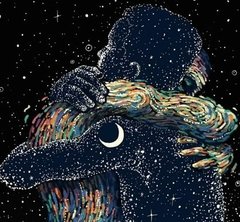
Dao, Dualities, Oneness, Creation, and the Importance of Distinctions for us Humans
silent thunder replied to Geof Nanto's topic in Daoist Discussion
Again, how grateful I am for all the wonderful folks who share here! Such words are treasure to me, and the timing of encountering them just this now... as I transition from my dream life to my waking life... uncanny! Thanks Bums... you have no idea how your words ring like bells in my life all through my days! -
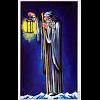
The deep significance of the placebo effect
Nikolai1 replied to Nikolai1's topic in General Discussion
Hi Brian, I've finally got time to reply to your long post. You had many objections so i'll have to be quite brief with each one: I deny that biochemistry is playing the causal role in a healing. Biochemistry is one of many valid paradigms within which to view the effects of Belief, but to view it as cause is untenable. The power of belief is demonstrated in the placebo condition, and it is also present in the active condition. Parsimony requires that we select one overarching cause, rather than take the belief that Belief for some reason falls into abeyance when the active pill is used. Trickery is deliberate deception. I've never asserted that. The belief that the medical/pharmocological industry has in their approach is sincere. I merely point out that there is a higher, truer perspective that few are aware of. I've never said this. There is a difference when the active is introduced, but this is because the active pill has greater power to influence the beliefs of the patient. They are different in colour, taste etc and these factors affect the patients state of mind. Most importantly, somebody somewhere believes in the active, and has negative belief in the placebo. Double and triple blinding has been proved necessary to reduce this, but it is impossible to eradicate it altogether. Yes that is my understanding, but tell me if I'm wrong. In the real world deliberate efforts are made to design the drug. Research has shown that giving a drug a name with a Z or an X in it makes it more effective, because these letters are associated with science and the future and progress. In the R&D phase the side effects of a drug are systematically scrutinised. Any hint of a side effect is seized upon, and these are then believed in more and more until there become part of the profile of the drug. Ethics require that these side effects are then presented as possible to the trial participants before participation. Although placebo produces side effects, they will more likely to appear in the active group because of the beliefs of the research team. These side effects will then enhance the active agent in the participant because they will feel the effects of the compound and this will produce the belief that they have taken something powerful. The concordance between their feelings and the warning before the trial will keep the participants believing that the scientists know what they are doing. The side effects therefore play a shared role in the healing. And they are not discovered after the fact but are investigated even at the animal trial phase. They are well known before the clinical trials which is the last phase and are basically about demonstrating costs against benefits for the sake of the consumer. Nowadays, the side effects for chemically related compounds are believed possible and so are in everyone mindset from the start. I addressed this is my last post. I am not calling for the end of medical science! I would happily donate to any research fund, I broadly speaking support the pharmaceutical companies. If they appear a bit cut throat i am sympathetic to the imaginable costs that go into R&D and just how astronomically difficult it is to get a drug to market. Pharmaceuticals are for the masses, and it is on behalf of the masses that I support them. But, when it comes to healing there is a better way for those few who are capable of it. But first they need to understand the deep processes that underlie medical science so as to loosen their belief. This is hard and requires traits that completely transcend intelligence, and are spiritual in nature. No, when we are unaware of something we become passive to somebody who is consciously aware of something. The beliefs of the guy who planted the LSD created the effects in the coffee drinkers. The LSD was incidental to the story, or worked only becuase the guy believed in LSD. Likewise, the could have got people tripping out, without the LSD but simply by saying 'OMG, did you drink that coffee cos I accidentally dropped acid into it'. If he was a good actor he could have got many people tripping out. Before self-realisation our knowledge is split up into conscious and unconscious. What is conscious we have 'ourselves', what is unconscious is had by 'other people'. When we become conscious of knowledge then it is ours to use to shape reality, and it gives us the power to shape that which is unconscious. This is how the LSD man gained power over the unwitting coffee drinkers. The people who were poisoned knew the presence of the CO unconsciously and were therefore vulnerable to all those who consciously declare CO to be toxic. The process of self-healing is therefore the process of raising all our unconscious knowlegde to the level of consciousness. This isn't as hard as it sounds because all the knowledge in the world is in fact pure ignorance and we can dispel it all, root and branch, by getting to the very false predicates of all this knowledge and raising it to consciosness. A self-healed person would not have been poisoned in this manner. They simply would have left the room, or known not to be there. Or, if forced, they would have tackled the widespread belief in CO toxicity and reversed it for themselves. Transmuted the warning conditions into safe ones. OK, I think that's pretty much it. I quite enjoyed your worldview speech and thought it had a certain amount of poetic power. But it didn't answer my question at all. I asked how the placebo works and you merely said that everything is connected energetically, and then something quite vague about how an electron is both a thing and a potential. i think you're on the right lines, but now actually bring it to the real world. All that you talk about is directly and concretely observable to the rightly orientated mind. You don't need to read lots of science books, you don't need to learn hard maths. You don't need to build microscopes or particle collliders. We don't need any further experiments to confirm anything. This science stuff is nice but you're following a lesser road. You're talking in tropes, metaphors. Realise it yourslef and you wouldn't dream of talking about Unity in such convoluted terms. You would not dream of being so abstract when you could use the everyday language of human experience. The intimate and direct fact that is reality is the thing you will emphasise first because it is the most obvious and the most helpful. But first, face up to the placebo! It is seriously difficult to make sense of it, but you must make the effort. Help me! Stop falling back on half-useful dogmas like laws of biochemsitry. Even if placebo cured only one in 100, then that should be enough to rouse the sincere seeker of truth from their dogmas. -
I thought you "self-censored" me? You've created a list of ad hominems, none of which engage with the content of the information I posted from math professors. But there are other people reading this website - so you can't try to censor their ability to read the information from math professor Louis Kauffman. haha. Or Eddie Oshins - both of whom worked at SLAC. Do you really think the STanford Linear Accelerator Center is "playing games"? As I explained - I discovered the secret of Daoist logic from music theory - in high school. I rejected the Pythagorean theorem in 10th grade since from my music theory training I knew the logic was wrong. I then took quantum mechanics my first year of colllege - and so I learned about entanglement and nonlocality and noncommutative phase logic. I also studied the Tao Te Ching and Gregory Bateson's book "Mind and Nature: A Necessary Unity." He discusses logical paradoxes - specifically how Western logic lacks a sense of time, thereby creating the paradoxes. So this is what Louis Kauffman is addressing. The issue of time as a supposed outside parameter in physics is the key issue here regarding "what is truth?" Lee Smolin who also took his first quantum mechanics class from the same professor I studied from, Herbert J. Bernstein, now focuses on this issue of time in Western physics. So Alain Connes emphasizes this same truth - that time has to be included as the parameter and that the foundation of reality is based on frequency and time - as noncommutative logic. So noncommutative phase creates spacetime - the noncommutative phase is the 5th dimension. Astrophysics professor Paul S. Wesson figured this out as well - from studying Louis de Broglie. So there is a new discipline in science - noncommutative geometry - and so here are various scientists who have figured this out: Sir Roger Penrose and Stuart Hameroff (I've corresponded with Hameroff). Basil Hiley (I've corresponded with him) Lawrence Domash (taught at Hampshire College where I attended my first year and took quantum mechanics). Herbert J. Bernstein (my quantum physics professor). Alain Connes (focuses on how music is noncommutative phase logic - just as I also figured out). Eddie Oshins (worked at Stanford Linear Accelerator Center and taught Daoist Wing Chun - realized the secret of Neigong was noncommmutative phase logic). Math professor Louis Kauffman (worked with Eddie Oshins at SLAC, and I've corresponded with him). So as I stated - there were a couple Chinese electrical engineers claiming you didn't need noncommutative phase logic to understand complex numbers. I sent this research to Louis Kauffman and asked him what he thought - since that is the focus of his research. He said he would publish a response. So then you posted your "complex numbers" thread and so that inspired me to check up on Kauffman's research. I discovered he indeed had published his response. So I posted it here. It's all pretty straight forward. I've been researching this issue since the late 80s when I did private music training with a former University of Minnesota music professor - while I was in high school. So I tested into third eye music theory level at Hampshire College. It's a small private college based on the Oxford tutorial system - or like Cambridge. So i could have graduated early but instead I wanted a more radical populist education. So I transferred into UW-Madison after living in the wilderness and working in Alaska for 6 months. So I continued my music research - but again I was connecting it to philosophy of science. This became a "monograph" in 1996 called the Fundamental Force - after I experienced qigong master Effie P. Chow. Wandelaar - have you yet sought out and experienced the energy of a qigong master? Why don't you just do so. This is a great way to "test" your model of truth. haha. In China - as I quoted - after the qigong revolution - they realized that there had to be a revolution in science to explain qigong - something that unified and went beyond just quantum and relativity physics. Qigong master Yan Xin calls it a "virtual information field" that does the healing. Qigong master Zhang Hongbao calls it a "superluminal" yin matter as the "golden key." Qigong master Chunyi Lin whom I studied with directly said he read the book the Holographic Universe and that it accurately portrays what a qigong master experiences. Michael Talbot's popular book The HOlographic Universe was based on Karl Pribram and the collaborator of Einstein and Basil J. Hiley - David Bohm. But as Eddie Oshins points out - Pribram did not understand the noncommutative phase logic. Oshins tried to explain it to Pribram but Oshins had to leave Pribram since Pribram could not understand it. In fact Oshins was pissed that his "quantum psychology" field got co-opted by the New Age Freemason types who are indoctrinated into symmetric logistic equations. So this really is about different worldviews - the Western worldview goes back to Plato and is based on symmetric math. I have also corresponded with math professor Ian Stewart, author of "Why Beauty is Truth: A HIstory of Symmetry." So there you go - Truth - right in the title! He surveys the whole of Western mathematical logic as based on symmetric logic. Only problem is that it is not! The Pre-Socratic logic was noncommutative (just as Daoist logic is noncommutative) and the relativistic quantum logic is noncommutative. Western math originates from music theory - as math professor Luigi Borzacchini has detailed. I first corresonded with Borzacchini in 2000. I mailed him a music math equation that I had scribbled down after a dream. He responded - in snail mail - from Italy - yes my math was good but I had no historical proof that it had been used. Fair enough. So we continued corresponding over the years - a few times. But he is retired now. So some human cultures do not even count past "several" - WEstern mathematics is an artificial construct that ignores the vast ecological destruction from "entropy." So when math professor Joe Mazur published his "Euclid in the Rainforest" book - back around 2000 - I also contacted him, explaining I had studied conservation biology in Costa Rica, where the book takes place, and I did not think Western math was saving the rainforest, but rather destroying it. Professor Mazur's brother is a famous "number theory" math professor - Barry Mazur. Anyway I mentioned my music-math research. Mazur asked me to follow up on a lead that I had mentioned - David Fowler. Sure enough I discovered David Fowler's math book stating that music theory should be able to solve the mystery of how continued proportions were converted into incommensurability - or irrational magnitude real numbers. So this is then exactly what Professor Borzacchini had researched and he discussed this issue with Fowler - in an online math forum. So then math professor Mazur asked me to submit my research for publication because he said he thought it was very important. I mentioned quantum physics and I was challenging the whole "symmetric logic" paradigm of Western math, from the perspective of music theory - so of course my article was rejected without comment. Now Professor Emeritus Mazur is having a new book published on the perception of time and the logical paradoxes of time. So he told me he was going to include a chapter on music perception. I asked him to include precognition as well since I know precognition is real. So I will now look to see if his book got published. https://www.bgagency.it/images/pdf/editoria-anglosassone/en-2017-agenzie-rights-list-andrew-stuart-literary-agency-frankfurt.pdf Yes - it is 2018 - so should be out soon - called Zeno's Quiver - and the description is in that pdf. I copied it to my blog. http://elixirfield.blogspot.com/2018/09/no-really-complex-numbers-are-from.html No really... Complex numbers are from noncommutative phase logic, as is Reality
-
I had a dream years ago, where I was climbing up a very high tower trying to escape some kind of monster. I ended up hanging hundreds of feet in the air, grabbing onto a steel bar, there was only an abyss to fall into. I was stuck, and fearful. All at once, I saw that I just could let go. I let go and fell, all the while laughing my ass off. It was wonderful.
-
When I was a teenager I spent a lot of time training myself to dream recall and to lucid dream. I discovered that focus and intent are the biggies for success for me. For dreams, becoming aware and alert as you wake and *before* you come up through all the dream layers can help you hook a memorable aspect of as many dreams as you are able to 'snag/tag' this way. That memorable aspect can then help you recall the dream fully when you're awake. And like someone said, lots of dreams are just emotional workings that really mean nothing much...except for the training you get from being able to retrieve them. Lucid dreaming is another thing altogether. I think I really managed to get into it when I used the Castenada trick of viewing your hands in a dream. Hard as hell, that. You not only have to become lucid in dreamtime and remember you gave yourself a task, you have to try to view your hands. Slippery little suckers! Stop morphing! But interestingly, I found lucid dreaming can be, well, tiring. I finally stopped doing it when I realized I really like to *sleep* at night! However, that kind of training is never undone. It allows deep penetration into dreamtime where things other than dreaming go on. Not that I can ever recall much of it. Seems like it's not meant to be brought into consciousness. So I don't try very hard. Just content knowing some part of me is accessing something/place/spirit beyond what my puny human self can comprehend. And it allows me to get into some very deep meditative states. Tres cool. Hmm...now why don't I do more of that?
-
In buddhism there is a teaching/observation that things are empty of independent existence where when we see a spider or hear a scary noise ...the fear comes from a reaction from our senses that have associated pleasant and unpleasant things or from a reaction in our minds...the spider isnt by nature scary...the fear comes from within us. The teaching isnt to deny the existence of fear its to make us realise that freeing ourselves of fear is found within us. You cannot free yourself of fear when you perceive it outside yourself... The teaching is about understanding that the world we perceive is a reflection of our inner world and not just objectively true...ie that spiders are inherently scary. i dont know what perceiving this emptiness does or what this teaching achieves but i am confused... when you see that your love for others comes from within and reality is a blank canvas what are we left with? What does reality become if you perceive that you project your feelings onto the world and live as if fear etc is real? Is this what the buddha meant when he said the world is an illusion that it is empty of inherent existance and that we create the worlds we see? incidentaly this teaching shows how absurd people are when they argue over which is the better food dish...two dreamers stuck in two different dreams arguing about what dream is better lol
-
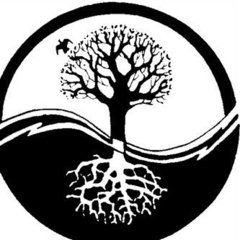
The identity-less and purposeless thread
Geof Nanto replied to CityHermit!'s topic in Forum and Tech Support
It’s only smooth-talking New Age pretend guru cats that can’t be trusted. Or so I’m told by a parakeet called Sid who lives near the local duck pond…… One day a cat arrived at the pond, bringing with it a murky, hematic odor of cynicism and unease. `Hey there, you guys,' the cat said, maintaining a polite distance. The cat was gray, and sat itself smugly on a large gray rock. 'Boy, are you ever an attractive-looking bunch of ducks! Seriously, I'm really impressed. I never even suspected ducks came as good looking as you guys, or halfway near as intelligent, either. I guess that just goes to show me, doesn't it? I guess that just goes to show that I don't know that much about ducks after all.' At first, the ducks glided off warily into the cold trembling pond, pretending not to be bothered, but never taking their eyes off the cat for one moment, either. `I'll tell you something, guys,' the cat continued, in a voice as gentle and intrepid as desire. 'I just came from the city and you don't have any idea how lucky you've got it out here. What a nightmare. What a cesspool of smog and urine and crime and poverty they've constructed for themselves in the city, boy. Dog eat dog, cat eat cat, cars running everybody over without so much as a hi or a how-de-do. Bang crash roar crash bang – I've had enough city life to last me a few thousand centuries or so. Which brings me, of course, to why I've decided to move out here to the woods with you guys. Fresh air, sunshine, plenty of exercise. And of course a strictly monitored vegetarian diet from now on. I'm taking charge of my life, boy, and taking it on the road. Call me an outlaw, if you wish; call me a rebel. But I'm tired of living the life society tells me to live. I'm finally going to live my life for myself, thank you very much. Come hell or high water.' While his smooth voice wetly purred, the cat licked his stubby, retractile paws and groomed his long twitchy whiskers, as if dressing himself for church. Then, giving the ducks a last fond look over his shoulder, he rested his head on the large gray rock and fell indefensibly asleep. `Frankly, I don't think you ducks are exactly the brightest flock of fowl I've ever come across in my rude travels,' Sid said, perched high atop a buoyant willow. 'We're talking a fat gray cat now, and that means cat with a capital C, A, T, and I can't believe I'm having to actually spell it out to you guys. Cats are what you call notoriously fond of fowl, fowl being you ducks and meboth. We're like this cat's dream of a main meal, and I don't care what he says about wildlife solidarity, or karma, or pantheism, or even free will. That cat wants to eat us alive. He wants to chew our flesh and rip our blood vessels into stringy pasta. But he wants to play with us first. He wants to tease us and cut us and watch us die slow. That's because he's a cat, and we're what you call fowl. Am I going too fast for you guys or what?' (From THE PARAKEET AND THE CAT by Scott Bradfield) -
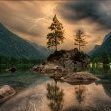
You are NOT qualified to critique a Spiritual Tradition if...
s1va replied to dwai's topic in Hindu Discussion
The difference is right there in the highlighted sentence. In AV, it is just an appearance when it comes to the existence of other beings. Such appearance is just maya and not real. The transcendental reality of the 'I' is the only truth. Whereas Abhinavagupta accepts both the transcendent and the immanent (bheda-abheda) as reality. If other sentient beings are just an appearance similar to a dream, what is the need for a jnani to help others? I doubt if we can find an answer to this question in AV. If there is no answer to this question, then there is no need for compassion, or for that matter morals or ethical values. -
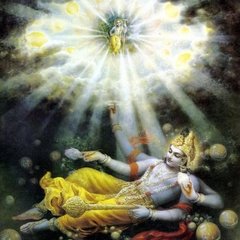
You are NOT qualified to critique a Spiritual Tradition if...
neti neti replied to dwai's topic in Hindu Discussion
Again, there is no difference, for as Parabrahman, the states of waking dream and sleep come and go, while You, the stateless, remain throughout. KS says oneness of states, AV says the separate states are illusion. It's a matter of perspective, not a difference. Conscious integration of what? That which springs forth from you? That's one perspective. Another is, there is nothing separate from you to integrate. -

You are NOT qualified to critique a Spiritual Tradition if...
s1va replied to dwai's topic in Hindu Discussion
1) In my personal view, there is subjective reality to separate sentient beings. 2) It is not only possible to help, I feel it is not possible for anyone to live alone without the interdependent help of other sentient beings and taking help from other factors of the universe. Such as, I benefit from the Sun's light everyday, breathe the oxygen that is transformed by the trees and plants, etc. Every time I eat a meal, some animal or plant has given it's life to become that meal on my plate. I am not fanatical about this view. But I feel it is important to be consciously aware that other beings are contributing to my survival all the time, without asking me anything back in return. To have gratitude and be able to give back is also important in my personal view. Others don't have to necessarily agree with my views. I respect if someone else holds a different view and sees it all as movie/dream. -
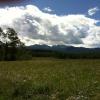
You are NOT qualified to critique a Spiritual Tradition if...
Jeff replied to dwai's topic in Hindu Discussion
Depending on one's view, these are all hugely different points. First, one has to know/decide if there really are other (separate) sentient beings. If there are not, then there is no point in ever trying to help them as it is all just a movie/dream. Second, is even if there are other sentient beings, is it possible to even help them, or is everyone just alone trapped in their own karmic path. To me, these two simple questions ultimately define the view and subsequent potential realization of the underlying tradition.



